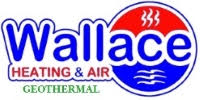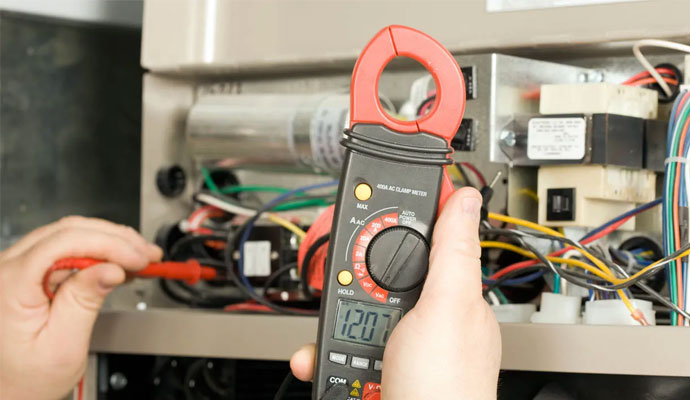As the temperatures start to drop, ensuring your furnace is running efficiently becomes a priority for staying warm and saving on energy costs. A well-maintained furnace can help you avoid costly repairs, keep your home cozy, and increase energy efficiency throughout the cold season. Here’s a step-by-step guide for homeowners to get their furnace ready for winter:
1. Schedule a Professional Furnace Inspection
The first step in ensuring your furnace is winter-ready is to schedule a professional inspection. Certified HVAC technicians can spot potential issues that you may miss and will ensure that your system is running safely. During the inspection, they’ll check for:
- Cracks in the heat exchanger
- Faulty electrical connections
- Proper airflow and venting
- Potential gas leaks
An annual furnace tune-up typically includes cleaning, tightening components, lubricating moving parts, and checking the thermostat’s accuracy.
2. Replace the Air Filters
A clogged or dirty air filter forces your furnace to work harder to maintain the desired temperature, increasing energy consumption. Before the heating season starts, replace the air filter with a new one. This simple maintenance task can:
- Improve airflow
- Increase energy efficiency
- Improve indoor air quality
- Extend the life of your furnace
Most experts recommend checking and replacing the furnace filter every 1-3 months, depending on the type of filter and how often your furnace runs.
3. Inspect and Clean the Vents and Ductwork
Blocked or dirty vents and ductwork reduce your system’s efficiency and compromise indoor air quality. Ensure all your home’s supply and return vents are unobstructed by furniture, dust, or debris. You may also want to schedule duct cleaning if:
- You’ve had recent renovations
- You notice more dust buildup than usual
- Family members experience unexplained allergy symptoms
Cleaning vents and ducts can optimize airflow and help your furnace distribute heat more evenly.
4. Check and Seal Leaky Ducts
Leaky ducts are a common cause of energy waste. If there are gaps or holes in your ductwork, the warm air your furnace produces will escape, leading to higher heating bills and inconsistent room temperatures. To address this issue:
- Inspect duct joints for visible leaks.
- Use aluminum foil tape or duct mastic to seal any gaps.
- Insulate exposed ductwork, especially in unheated spaces like attics or crawlspaces.
Sealing leaky ducts can improve your home’s energy efficiency by up to 20%, according to the U.S. Department of Energy.
5. Test the Thermostat
An improperly functioning thermostat can cause your furnace to short-cycle (turn on and off frequently), leading to wasted energy and unnecessary wear on the system. Before winter hits:
- Test your thermostat to ensure it’s responsive and properly calibrated.
- Consider upgrading to a programmable or smart thermostat, which can automatically adjust temperatures based on your schedule. This can save you money by lowering the heat when you’re asleep or away.
6. Check the Furnace Exhaust and Intake Pipes
If your furnace is vented through an exterior wall, check the exhaust and intake pipes for any blockages like leaves, debris, or snow buildup. A blocked exhaust pipe can lead to carbon monoxide buildup, while a blocked intake pipe can reduce furnace efficiency. Make sure both pipes are clear to prevent airflow restrictions and ensure safe operation.
7. Keep the Area Around the Furnace Clear
For safety and efficiency, keep the area around your furnace free of clutter. Flammable items such as cardboard, paint cans, or rags should never be stored near your furnace. Keeping a clear space around the furnace also ensures better airflow and easier access for maintenance.
8. Consider Upgrading an Old Furnace
If your furnace is more than 15-20 years old, it may be time to consider upgrading to a new, energy-efficient model. Modern furnaces can be up to 98% efficient, meaning almost all the fuel they use is converted into heat. While a new furnace is a significant investment, it will pay off in the long run through lower energy bills and fewer repairs.
9. Review Your Carbon Monoxide Detector
Your furnace produces carbon monoxide (CO), a colorless, odorless gas that can be deadly if it accumulates in your home. As a precaution, ensure your carbon monoxide detectors are working properly:
- Test the batteries.
- Replace detectors if they are more than 5-7 years old.
- Place detectors on every level of your home, especially near bedrooms.
10. Adjust Humidity Levels
Dry air in winter can cause discomfort, such as dry skin or static electricity. Adding a whole-home humidifier to your furnace system can help maintain a comfortable humidity level, which also allows you to lower the thermostat without sacrificing comfort.
Conclusion
Preparing your furnace for winter isn’t just about staying warm—it’s also about improving energy efficiency and avoiding unexpected breakdowns. By following these tips, you’ll ensure your furnace runs smoothly, keep heating costs down, and create a safe, cozy home all winter long.
For more energy-saving tips and professional HVAC advice, feel free to schedule a consultation with your local heating experts.

